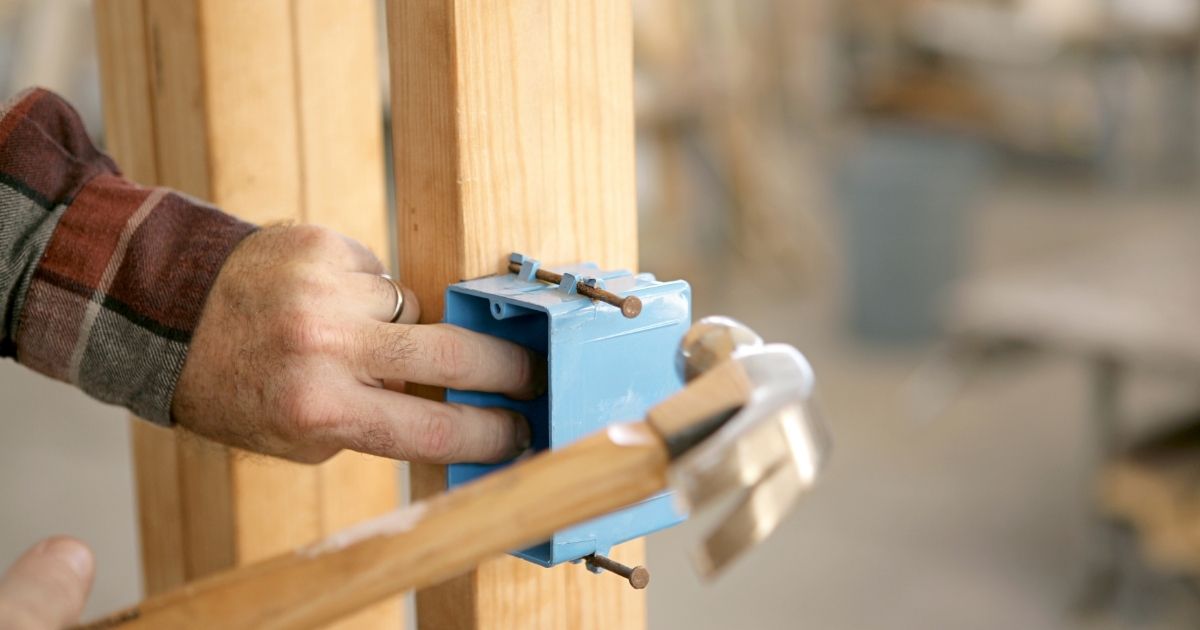Maintaining a safe electrical workplace and adhering to safe electrical practices have been of concern because of the connection between electricity and fires and unwanted injuries from misuse.
In the United States today, there are multiple levels of governmental rules, from the Occupational Safety and Health Administration (OSHA) down to the states to local authorities, to ensure safe electrical practices. Worker safety and workers’ compensation benefits can go hand in hand here.
Maintaining a workplace with safe electrical practices is something every worker deserves and needs. Employers and employees alike have a responsibility to ensure a safe workplace regarding electricity.
Who is at Risk, and What are the Risks with Electricity?
Those working with electricity in any form have risks for injury. Identifying those risks is helpful in describing what are safe practices for a workplace that uses electricity actively.
These are some of the risks involved:
- Simply standing in water when an electrical source is introduced.
- Being on a metal ladder that leans on a live power line.
- Being in a vehicle that comes into contact with a live power line.
- Exposure to live electrical current. Injuries can be a shock to involuntary grasping of the source wire to electrocution or the tool through which the electricity flows. Severity depends on the amperage and length of exposure.
- An arc blast, an electrical explosion, releasing great energy after an improper connection has been made.
- For outdoor workers, lightning strikes are exceedingly rare, but they do occur. Outdoor workers should be aware of weather conditions.
- Using electrical devices near flammable vapors and gases that can ignite.
- Having untrained or unqualified workers accessing areas or equipment with electrical dangers.
All risks are broadened with the failure to use personal protective equipment (PPE) for the job or task. Additional types of PPE for these risks include electrical protective equipment such as insulating blankets, matting, covers, gloves, and rubber sleeves.
The Risk of Electrocution
Unfortunately, high voltages and large electrical current loads with heavy machinery can produce electrocution hazards. Electrocution deaths in the workplace occur each year in the United States. This risk is higher for those who are routinely exposed to high voltages, such as high-tension line workers, specialty electricians, power company linemen, and other workers.
If a loved one has lost their life while on the job because of an electrocution accident, worker’s compensation benefits and death benefits are available under New Jersey law. In these cases, a seasoned workers’ compensation lawyer can provide valuable assistance.
In some circumstances, there may be third-party liability as well. Not all electrical accident causes are obvious at the time of the accident. Manufacturing defects and the like may be contributory causes. Only an experienced workers’ compensation lawyer can sift through the facts and determine if there is any third-party liability to maximize recoveries for victims.
Safe Electrical Practices in the Workplace
There are different types of safety practices and precautions regarding electricity. Training and qualification are two types. Another set of precautions is safety rules. In addition, the safe operation of equipment is of utmost importance. Specifically for electrical workplaces, the following are recommended safe practices for employers to adopt and implement and for workers to follow:
- Prevent any potential contact with live wires and electrical current. Unqualified workers should avoid electrical currents greater than 50 volts.
- Maintain safe distances from electrical sources. Increased current loads can literally jump distances.
- Lock-out or tag-out electrical sources as appropriate. Live parts should be de-energized before work or access is allowed.
- Proper use of cords must be followed, including unplugging from the plug head, no use of staples, and no hanging of electrical equipment from cords.
- Regular and proper inspection of cords and plugs for external defects must be done.
- Physical barriers should be used around electrical cords. Workers should close electrical cabinet doors, and if the cabinet cannot be closed, shields and barriers should be employed.
- Workers must always assume electrical parts are alive, and avoid using cleaning materials in that area.
- Whether on a ladder or a platform, be aware of overhead electrical lines. Workers should use a non-conductive ladder and try to keep a distance of at least 10 feet from the line.
- Flammable vapors of any kind can ignite with an electrical source or field. These never mix.
- Only qualified workers should be near any live wire.
- Workers must know and follow the company’s electrical safety workplace practices. If there are questions or concerns, workers should immediately tell supervisors or management.
Who is Responsible for a Safe Electrical Workplace?
There are laws and regulations assigning responsibility for creating, maintaining, and preserving a safe electrical workplace. An experienced lawyer can assist any worker with a question in this regard.
As with any other workplace, the employer and the worker have different responsibilities.
Employer responsibilities. The employer has the responsibility for the following:
- Training and ensuring all workers know safe practices for working with electricity.
- Know who is a qualified person and who is an unqualified person and how these classifications dictate workplace assignments and management.
- Provide any additional training for more advanced or specialized electrical work.
- Make sure all workers and supervisors know the emergency safety plans to treat injured workers, isolate areas, lock-out electrical sources, or even evacuate the workplace.
- Assigning visual inspection of wires, lines, outlets, and other equipment on a regular basis.
- Providing appropriate PPE for any electrical work. PPE in this context includes the following:
- Nonconductive hard-hats, gloves, foot protection, and insulating mats
- Eye and face protection from electric arcs
- Insulated tools
- Protective shields
- Instructing workers that conductive materials such as bracelets and other jewelry cannot be worn on the job.
- Provide protection from energized parts when de-energizing is not possible.
- Provide adequate lighting in the workplace.
- Provide grounded lines and equipment and ground-fault circuit interrupters (GFCIs) where required.
Worker responsibilities. Workers are equally important in maintaining a safe work environment regarding electricity. Workers are responsible for the following:
- Know and follow all workplace safety rules, including those for the safe use and operation of electrical tools and equipment.
- Abide strictly by the worker’s classification: qualified or unqualified to be near electrical sources or equipment or use the equipment.
- Whatever the classification, recognize the signs of an electrical defect or unsafe condition. If a wire is cut or frayed, it is damaged and dangerous and should not be used. If flammable vapors are present, electrical tools and equipment should not be used unless proper precautions are taken. Workers must avoid dangerous areas.
- Use the PPE provided, and if a specific item is not provided, speak immediately with a supervisor. Requirements and guidelines for PPE use are based on science and observations to promote safety in the workplace.
- When in proximity of an open electrical source, such as a live wire, if there are questions, do not hesitate to ask and get instructions from supervisors.
Burlington County Workers’ Compensation Lawyers at Pietras, Saracino Smith & Meeks, LLP, Help Workers Recover from Electrical Accidents
Working with electricity is dangerous for the untrained and even for those with training and qualifications. Electrical hazards can be minimized but not eliminated completely. Following the appropriate precautions can help protect those working around electricity. The Burlington County workers’ compensation lawyers at Pietras Saracino Smith & Meeks, LLP, are available to ensure that any person injured in an on-the-job accident receives all the compensation for which they are entitled under the law. Workers’ compensation is our focus. Call us today at 856-761-3773 or contact us online to schedule a free consultation. Located in Cherry Hill, New Jersey, we serve clients in Camden, Cinnaminson, Delran, Maple Shade, Pennsauken, and throughout South Jersey.













